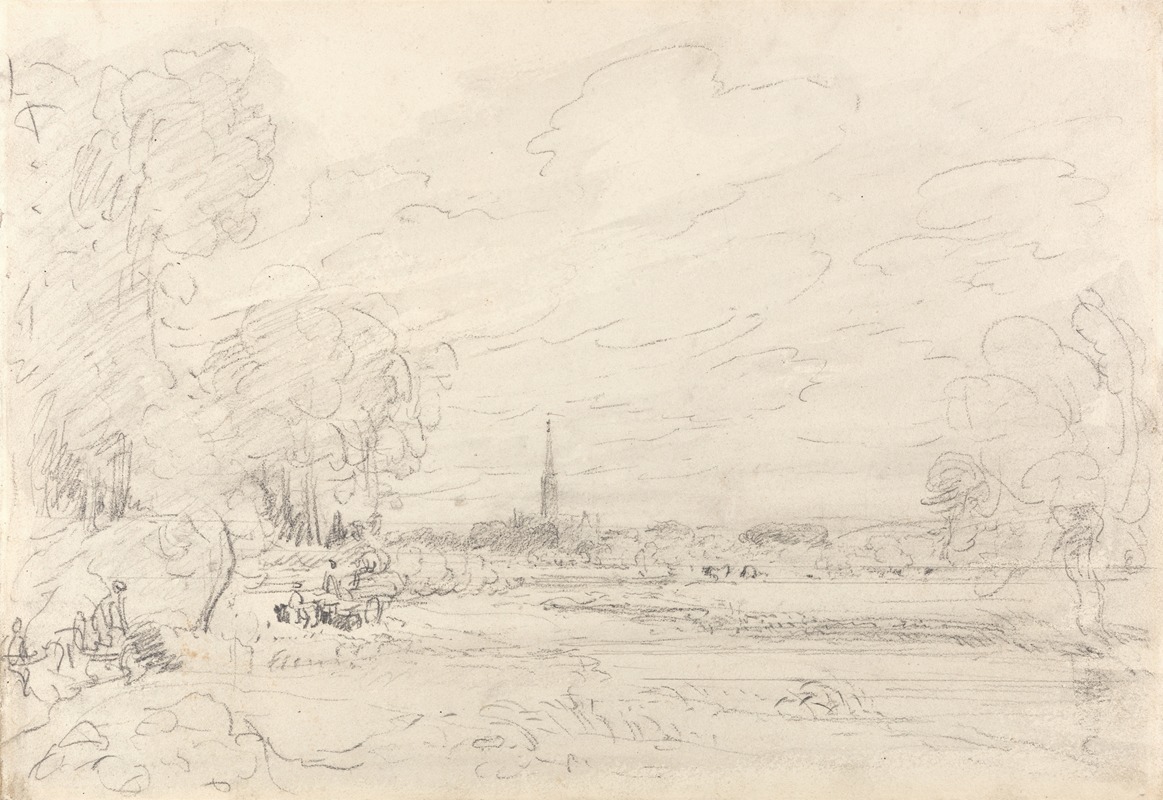
Salisbury Cathedral From the Meadows
A hand-painted replica of John Constable’s masterpiece Salisbury Cathedral From the Meadows, meticulously crafted by professional artists to capture the true essence of the original. Each piece is created with museum-quality canvas and rare mineral pigments, carefully painted by experienced artists with delicate brushstrokes and rich, layered colors to perfectly recreate the texture of the original artwork. Unlike machine-printed reproductions, this hand-painted version brings the painting to life, infused with the artist’s emotions and skill in every stroke. Whether for personal collection or home decoration, it instantly elevates the artistic atmosphere of any space.
Salisbury Cathedral from the Meadows is a celebrated oil painting by the English Romantic artist John Constable. Completed in 1831, the work is one of Constable's most significant late masterpieces and is often regarded as a profound expression of his personal and artistic vision. The painting depicts Salisbury Cathedral in Wiltshire, England, viewed from across the River Nadder, with dramatic skies and a rainbow arching over the scene.
The painting was created during a period of personal turmoil for Constable. His wife, Maria Bicknell, had passed away in 1828, leaving him deeply grief-stricken. This loss profoundly influenced his later works, including Salisbury Cathedral from the Meadows. The painting is imbued with a sense of emotional intensity, which is reflected in the turbulent sky and the interplay of light and shadow. The rainbow, a prominent feature of the composition, is often interpreted as a symbol of hope and divine presence, though Constable himself did not explicitly state its intended meaning.
The cathedral itself was a subject of great interest to Constable, who had visited Salisbury multiple times. He was a close friend of John Fisher, the Bishop of Salisbury, and his family. Fisher's encouragement and hospitality played a significant role in Constable's connection to the area. The cathedral's Gothic architecture and its surrounding landscape provided inspiration for several of Constable's works, but Salisbury Cathedral from the Meadows stands out for its dramatic and emotional depth.
The painting was exhibited at the Royal Academy in 1831, where it received mixed reviews. Some critics praised its grandeur and emotional power, while others found its dramatic style overwhelming. Despite the initial reception, the work has since been recognized as one of Constable's greatest achievements. It exemplifies his dedication to capturing the natural world with both technical skill and emotional resonance.
In 2013, Salisbury Cathedral from the Meadows became part of the Tate collection in London through a partnership involving several British institutions. This acquisition ensured that the painting would remain accessible to the public and preserved as a national treasure. Today, it is celebrated as a quintessential example of Constable's ability to combine naturalistic detail with profound emotional expression, solidifying his legacy as one of England's most important landscape painters.

















![Designs for roadhouse or terrace restaurant.] [Perspective elevation with colored roof](/imgs/249320/s/winold-reiss-designs-for-roadhouse-or-terrace-restaurant-perspective-elevation-with-colored-roof-95287611.jpg)
